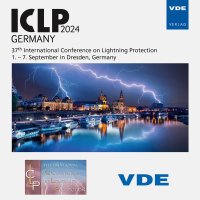Practical considerations for designing an economically feasible Lightning Protection System for utility scale PV plants
Conference: ICLP 2024 - 37th International Conference on Lightning Protection
09/01/2024 - 09/07/2024 at Dresden, Germany
Proceedings: ICLP Germany 2024
Pages: 10Language: englishTyp: PDF
Authors:
Grobbelaar, Ivan
Abstract:
Utility scale photovoltaic plants (PV), typically classified as 1MWp and upwards [10], play an important role in the transition to renewable energy globally. The technology has reduced in cost in the last decades, where installed capacity and physical size of such plants has increased as a result. Due to the increase in size, it can be noted that lightning re-lated risk has also increased based on the expected number of lightning strikes to a facility. Consideration of lightning protection is therefore needed, but may also increase the cost considerations of the facility for plant owners and design-ers. Due to the magnitude of utility plants, a relatively small change in concept can lead to high unexpected initial capi-tal expenses that may deem a project unviable. Exclusion of appropriate lightning protection could also result in higher than expected financial losses during the operation period of the facility. This paper focuses on practical considerations which could provide economically feasible adjustments to the design of PV plants to ensure a high probability of protection with a significantly reduced cost in material and installation when compared to a standard lightning protection solution. Focus is placed on adjustment to earthing, cable routing and di-mensioning and placement of lightning air-termination rods. The adjustments to the design are based on the key charac-teristics of lightning which are viewed from a practical perspective. Earthing meshes with integration to above-ground structures may assist in reduction of specific energy and current measured at equipment, ensuring safe operation of surge protection with an increase in longevity of equipment. In addi-tion to this, cable routing with consideration to reduce loop sizes and utilising above-ground support structures as shielding, may reduce induced voltage and avoid possible damaging flashover to equipment. Lastly, dimensioning of air-termination could be focused on considering lightning strikes with a low average peak value, to increase probability of protection from a practical perspective. The practical adjustments to a design are validated with use of XGSLab advanced simulation software, comparing a standard design to an adjusted design.


